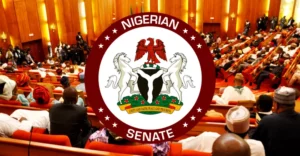Global flows of foreign direct investment have been severely hit by the COVID-19 pandemic. The impact of the pandemic caused a serious collapse in the Investment flow which was mainly concentrated on the first half of 2020.
The Global foreign direct investment (FDI) flows fell by 35 per cent in 2020, to $1 trillion from $1.5 trillion the previous year. The lockdowns around the world in response to the COVID-19 pandemic slowed down existing investment projects, and the prospects of a recession led multinational enterprises (MNEs) to re-assess new projects.

This is a major concern, because international investment flows are vital for sustainable development in the poorer regions of the world. Increasing investment to support a sustainable and inclusive recovery from the pandemic is now a global policy priority. This entails promoting investment in infrastructure and energy transition, in resilience and in health care.The World Investment Report supports policymakers by monitoring global and regional investment trends and national and international policy developments.
In 2020, they fell by one third to $1 trillion, well below the low point reached after the global financial crisis a decade ago.
Global FDI flows dropped by 35 per cent to $1 trillion, from $1.5 trillion in 2019. This is almost 20 per cent below the 2009 trough after the global financial crisis.

The decline was skewed towards developed economies where FDI fell by 58 per cent. While FDI in developing economies decreased by a more moderate 8 per cent, mainly because of resilient flows in Asia. As a result, developing economies accounted for two thirds of global FDI, up from just under half in 2019.
This year’s report reviews investment in the Sustainable Development Goals (SDGs) and shows the influence of investment policies on public health and economic recovery from the pandemic.
A concerted global effort is needed to increase SDG investment leading up to 2030. The package of recommendations put forward by UNCTAD for promoting investment in sustainable recovery provides an important tool for policymakers and the international development community.
Greenfield investments in industry and new infrastructure investment projects in developing countries sufferred grossly the impact of the global pandemic.
THE IMPACT OF COVID-19 ON GREENFIELD INVESTMENT AND DEVELOPING COUNTRIES
For greenfield investment – more important for developing countries the negative impact trend continued throughout 2020 and into the first quarter of 2021.

The number of newly announced greenfield projects fell by 42 per cent and the number of international project finance deals – important for infrastructure – by 14 per cent. This compares to a 19 per cent decline in greenfield investment and an 8 per cent increase in international project finance in developed economies.
THE IMPACT ON INTERNATIONAL PRIVATE INVESTMENT IN SDGs

The fall in cross-border flows affected investment in sectors relevant for the SDGs. SDG-relevant greenfield investment in developing regions is 33 per cent lower than before the pandemic and international project finance is down by 42 per cent.All but one SDG investment sector registered a double-digit decline from pre pandemic levels (figure 4). The shock exacerbated declines in sectors that were already weak before the pandemic – such as power, food and agriculture, and health. The gains observed in investment in renewable energy and digital infrastructure in developed economies reflect the asymmetric effect that public support packages could have on global SDG investment trends. The sharp decline in foreign investment in SDG-related sectors may slow down the progress achieved in SDG investment promotion in recent years, posing a risk to delivering the 2030 agenda for sustainable development and to sustained post-pandemic recovery.
THE RECOVERY OF FDI
The FDI recovery will be uneven. Developed economies are expected to drive global growth in FDI, with 2021 growth projected at 15 per cent (from a baseline excluding conduit flows), both because of strong cross-border M&A activity and large-scale public investment support. FDI inflows to Asia will remain resilient (8 per cent); the region has stood out as an attractive destination for international investment throughout the pandemic. A substantial recovery of FDI to Africa and to Latin America and the Caribbean is unlikely in the near term. These regions have more structural weaknesses, less fiscal space and greater reliance on greenfield investment, which is expected to remain at a low level in 2021.
Early indicators – FDI projects in the first months of 2021 – confirm diverging trajectories between cross-border M&As and greenfield projects. Cross-border M&A activity remained broadly stable in the first quarter of 2021 and the number of announced M&A deals is increasing, suggesting a potential surge later in the year. In contrast, announced greenfield investment remains weak.


